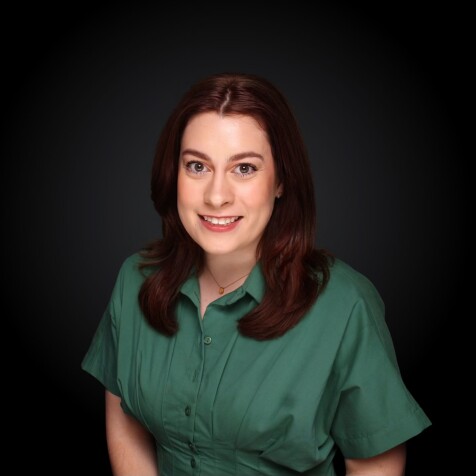A Mystery Solved— And a Life Altered

Caitlin Dolt.
Caitlin Dolt loves a problem. That’s how the Texas native came to study both physics and classics at the College of William & Mary in Virginia—and it’s how she found herself at the center of one of the school’s most enduring academic mysteries.
In high school Dolt excelled at physics, and she entered college with a clear plan. “Undergrad physics, grad school aerospace engineering, work for NASA, go to space,” she says. She studied pulsars, but while she loved the work, she soon began to wonder if a better fit existed elsewhere. “The plan was not working,” she says. For Dolt, this unexpected turn was terrifying.
Luckily, her heavy course load was also a varied one. “Studying STEM at a liberal arts school was the most valuable thing I ever did,” she says.
To fulfill a language requirement, Dolt chose to take a Latin class. “I fell in love with it,” she says. “I found physics through things that came intuitively to me and classics through what I most enjoy.”
It was this unusual combination of studies that got the attention of Josh Erlich, one of Dolt’s sophomore physics professors. For several years, Dolt had been among a group of faculty members and students who were attempting to identify the source of Latin annotations made in the margins of a treasured first edition of Isaac Newton’s Philosophiæ Naturalis Principia Mathematica in William & Mary’s collection.
Maybe, he thought, Dolt could help.
He was right. In under two weeks, Dolt had identified the annotator— Thomas Staughton Savage, who donated the Principia to the college in 1869—by scrutinizing handwriting samples and discovering that the lowercase ps and ds were particular to Savage. She then moved on to the next set of puzzles: annotations apparently not written by Savage, as well as what appeared to be a secret code. They became the basis for Dolt’s senior thesis, and in time she discovered that the code was Savage writing in a shorthand system.
For Dolt, the work on the Principia was life altering. “There isn’t really a single part of me that was not shaped by that project,” she says. “The joy that I found through that work made me get what life is all about.”
Studying classics eventually brought Dolt back to physics. “When I wasn’t holding it hostage and it wasn’t holding me hostage, I found how much I loved it and how much I missed it and how much actual joy I had for following derivations and following the way different people think and uncovering solutions.”
Dolt double majored in classics and physics, with a math intensive. Today, she’s a solutions architect for global data center Equinix, where she tackles technology challenges for business clients. For Dolt, it’s a natural fit.
“I still joke about having a quantum mechanics class at 10 and Roman Art and Archeology at 11,” she says. “It was an act of translating between Latin and English, obviously, but also between highly technical groups of people and maybe not-so-technical groups of people. And that’s what I do for this company. I work between product and sales and discover the art of what’s possible. I get to build relationships and be connected to people.”
And Dolt isn’t done with exploring branching interests—or adding new ones. She recently led a successful petition to keep the doors of her local library open and now serves on the library’s board of directors. She’s pondered law school and may even write a book about the Principia project.
Her physics degree, Dolt has found, continues to provide value through soft, transferable skills, including the problem solving abilities and analytical thinking that helped her crack a centuries-old code.
“There are so many paths available to physics students,” she says. “You’re limited only by what you can imagine for yourself and what you’re willing to work hard for.” //




